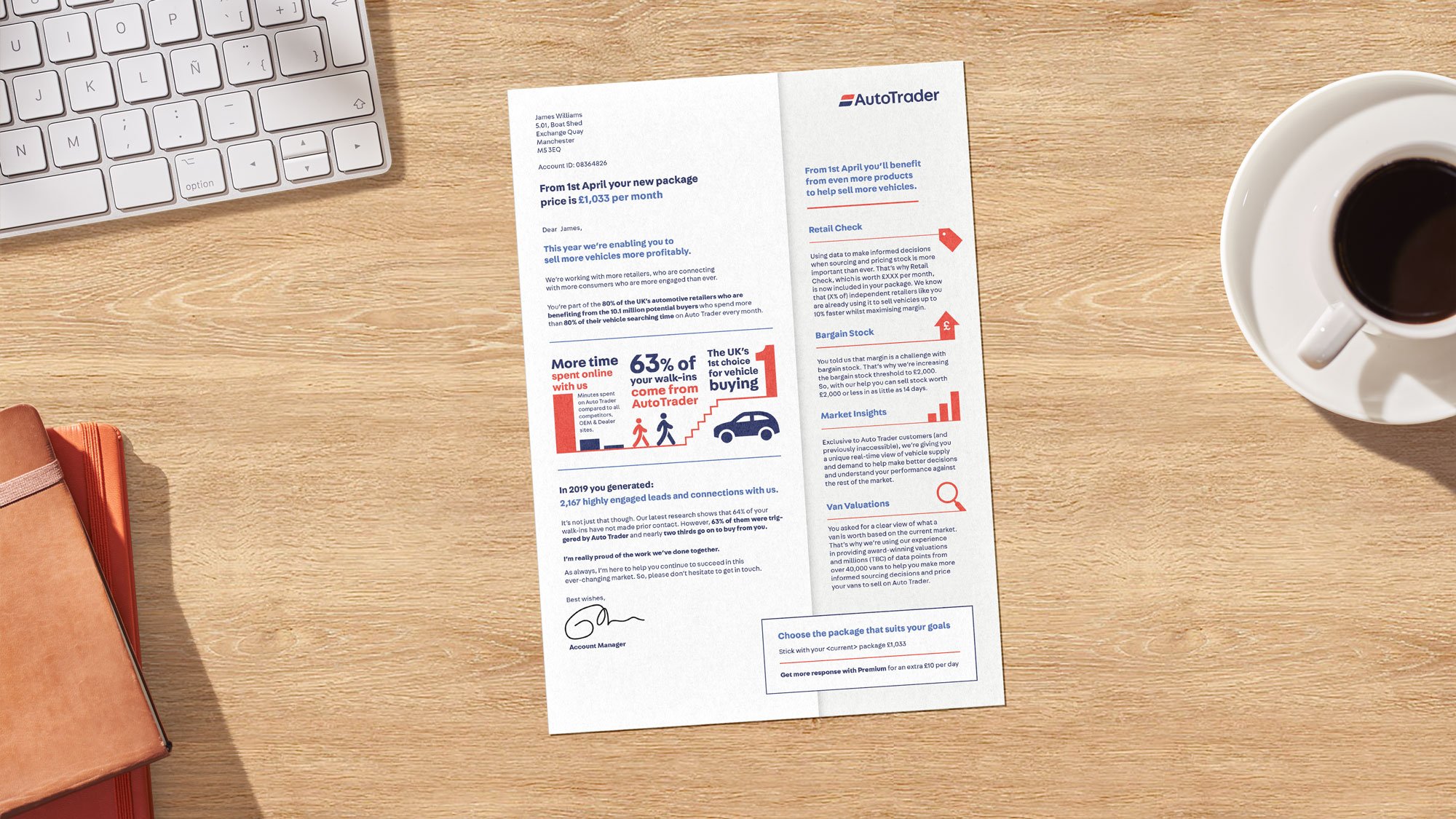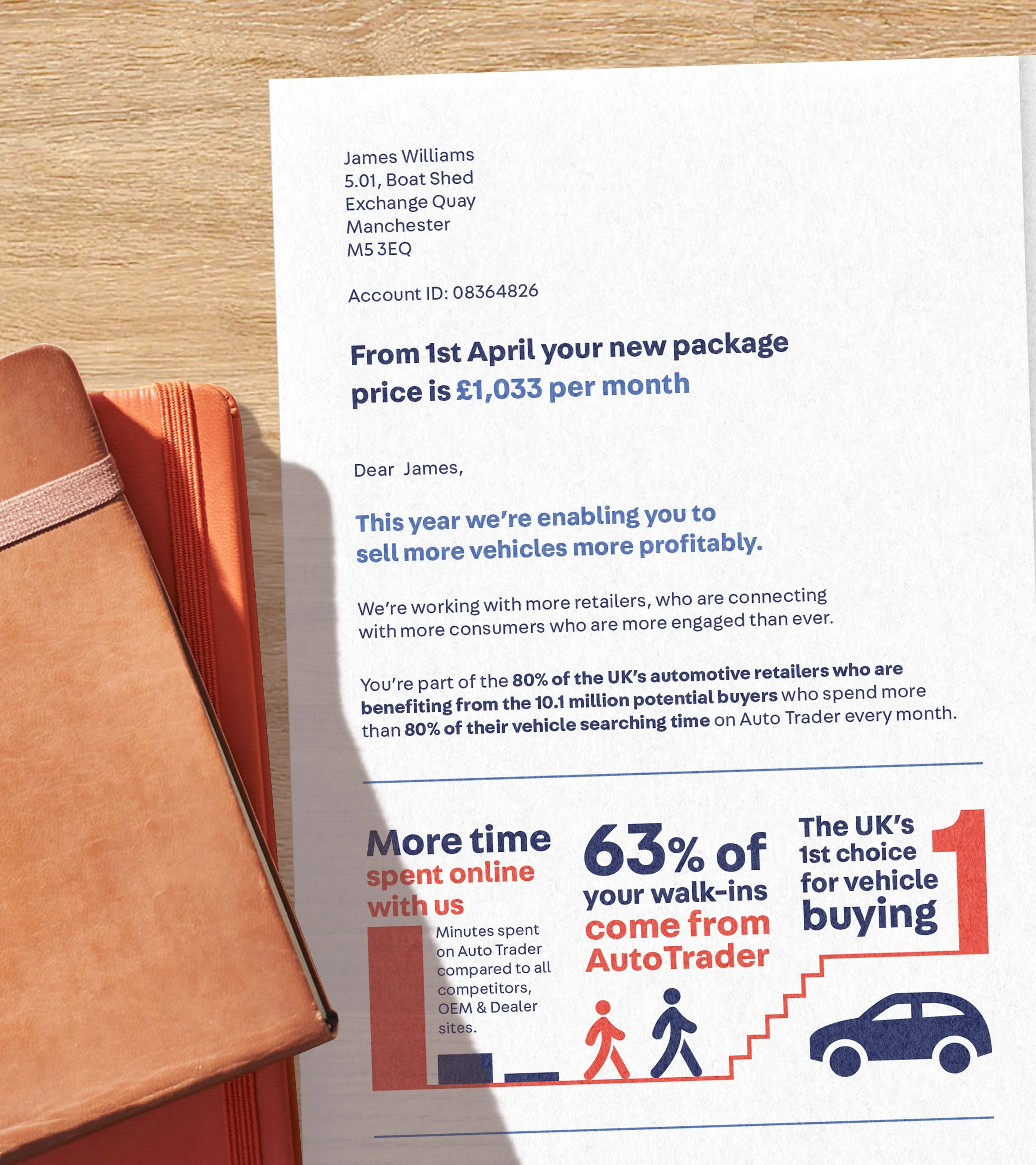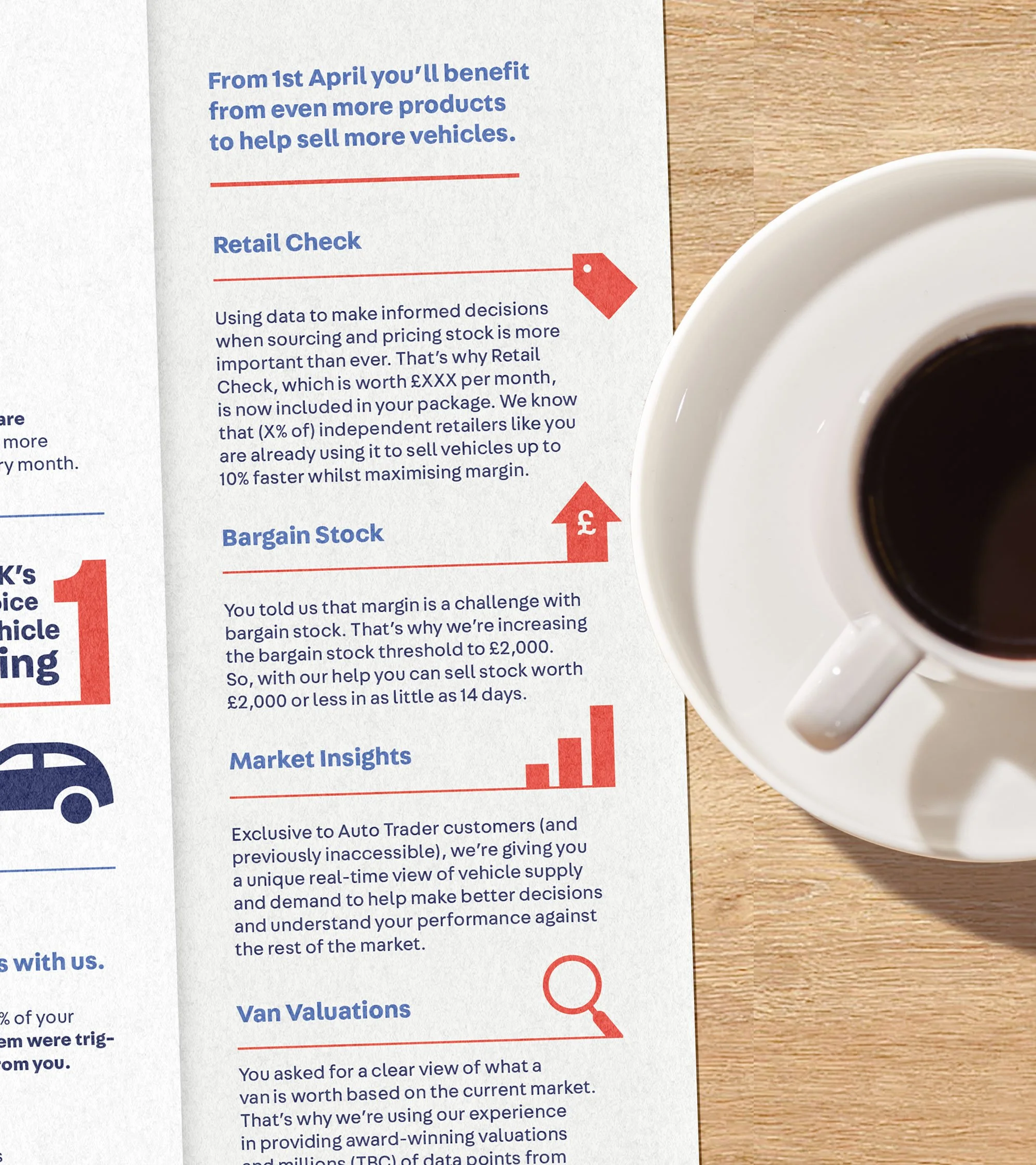
Auto Trader
Using behavioural science to strengthen value perception
Marketing Challenge
Convince vehicle retailers that paying Auto Trader’s premium price represents a good investment for their business, using an annual price rise campaign’s key mechanic; a letter.
Behavioural Insight
Car dealers are sceptical that their investment is Auto Trader’s platform, which is expensive, offers them value. The perception is that Auto Trader get more out of the relationship than they do. So informing them that their annual premium for Auto Trader required an approach that increase the perception of the value dealers received, to soften the blow of the price they’d have to pay for it.
Transformation
We conducted a review of the existing academic studies and papers to identify previous successful experiments relating to how behaviour can be influenced and impacted by pricing and perception of value.
This was followed by the delivery of a behavioural workshop, alongside the Auto Trader team and a behavioural scientist. Together. we explored all the behavioural levers we could use, using the messages and data that Auto Trader had that would seem to indicate value for the dealer’s business.
The result was a transformed piece of communication; from 3 pages of unappealing and largely irrelevant copy to a carefully and deliberately written and designed one page letter, that conveyed all the benefits and value of listing vehicles on Auto Trader, which were bespoke to all dealers.
Outcome
A shift in the retail customers' behaviour from one of disgruntlement and resentment to gratitude and compliments on how the change in price had been communicated.
The annual price uplift communication to vehicle retailers took place in March 2020, unfortunately, because of the COVID-19 crisis the tracking metrics for success were unavailable. Auto Trader decided to offer its retailers free listings on its site for the duration of the Government imposed closure of all car dealerships.
We leveraged 6
behavioural biases
Social Proof
By telling the recipient that they’re one of many successful users of the service is more likely to make them want to continue doing so.
Transparency
People perceive things to be fairer if they told the upfront, so we positioned the new price right at the start.
Reciprocity
By telling the recipient all the good things they had benefited from, they are more likely to see the value in that service.
Bandwagon Effect
People tend to follow the actions of those similar to them, so we told retailers their peers were using the service successfully.
Cocktail party effect
It’s proven that people like to feel valued so we addressed the recipient personally and signed off the letter from someone they know.
Picture superiority effect
We notice and comprehend imagery quicker than we do text, so key stats were displayed with icons and illustrations.










